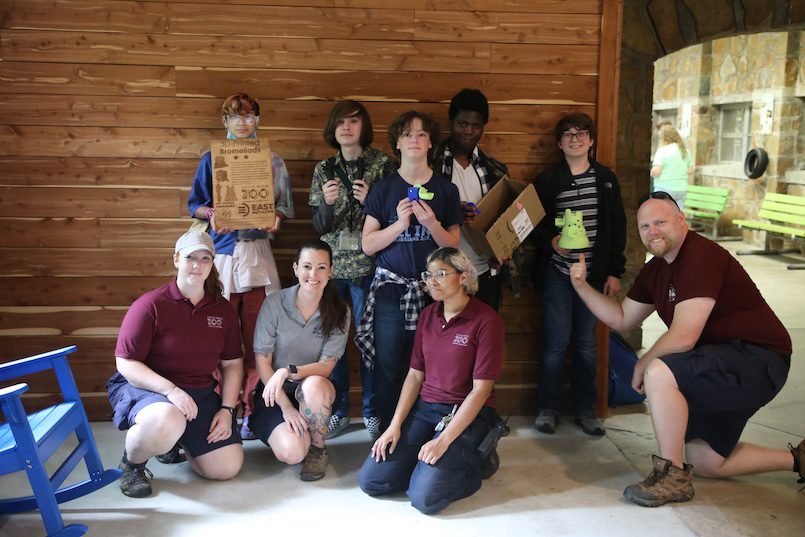06 Nov 2023 EAST Initiative schools selected for Project Zoo
LITTLE ROCK — Sixteen projects from ten schools around the state have been selected to participate in Project Zoo for the 2023-24 project year, officials with Little Rock Zoo and the EAST Initiative announced today.

More than 50 project proposals were submitted this year. Dubbed “The Wild Side of Project-based Learning,” Project Zoo is designed for students in 3rd through 12th grades who are participating in an EAST program at their school. The program partners the Little Rock Zoo with applicants interested in utilizing their classroom’s resources, time, and talent to help solve challenges at the Zoo.
Schools selected to participate this year include:
- Armorel High School (Blytheville)
- Buffalo Island Central High School (Monette)
- Don Roberts Elementary School (Little Rock)
- Dover High School
- Hamburg Middle School
- Hot Springs Junior Academy
- North Little Rock Middle School
- Parson Hills Elementary School (Springdale)
- Sulphur Rock Magnet Elementary School
- Washington Junior High School (Bentonville)
“The Little Rock Zoo has been an exceptional partner for EAST for several years,” said Fred Rickert, EAST’s Program Coordinator for Special Projects. “The past two years, we have seen a significant increase in relevant prompts from several of the keepers at the zoo. This provides not only a knowledgeable client for our students with whom to work but also well-defined problems in a real-world setting for our EAST students to solve.”
Little Rock Zoo and EAST’s unique partnership formed in the 2019 school year. The Zoo’s mission is to inspire people to value and conserve the natural world; EAST’s mission is to provide an environment that fosters relevant, individualized, life-changing experiences through service and technology. Together, the two organizations afford students the opportunity to leverage their interest and expertise in STEM to benefit the operations of and guest experiences at one of Little Rock’s most loved institutions.
Deavult, the Zoo’s Conservation Education Manager, noted that solving real-world problems at the Zoo is at the heart of the Project’s mission and complimented all applicants’ creative problem-solving skills. “Students submitted some very compelling proposals this year. A few teams even showed up for interviews with basic prototypes or example materials.”
Each year, Zoo staff provide applicants with project prompts as a means of providing guidance for project applications. These prompts are open-ended in nature and are meant to be starting points for problem solving and creativity. Prompts this year included Penguin Nest Boxes, Tamandua Termite Mounds, Macaw Transportation Safety, Enhancements for Visual/Hearing Impaired, and 3D Printed Biofacts among others.
Selected schools will work closely with Zoo staff members through the end of the school year to complete these projects and then hand them off to the Zoo for use. “We saw a lot of confidence from the students as well as creative problem solving,” Deavult said. “There were great conversations taking place as Zoo staff helped hone in on the scope and direction of the projects.”
Matt Dozier, President/Chief Executive Officer for the EAST Initiative, said long-standing collaboration between the two organizations is the best example of building synergy between education and community engagement. “Project Zoo allows students to engage with a real-world, hands-on project at the Zoo. Students have the chance to work on projects that not only enhance their technical and problem-solving skills but also foster a deep sense of connection to nature. They gain so much from this unique, immersive learning experience.”











